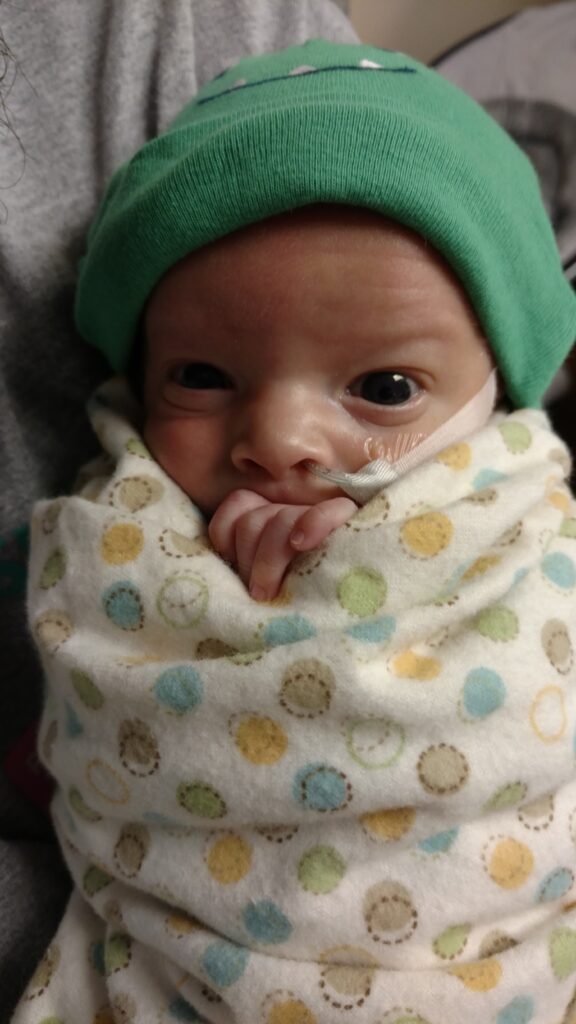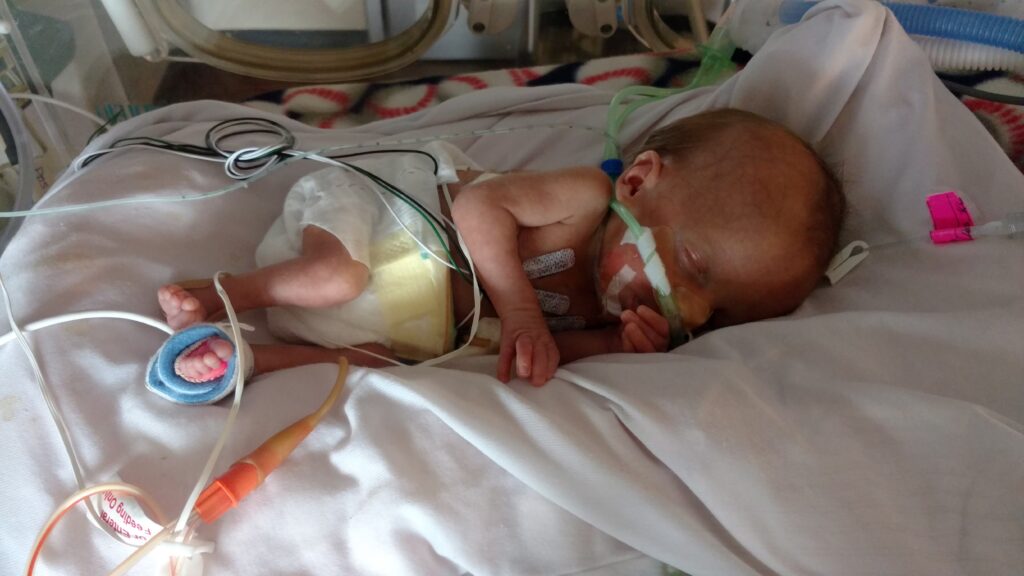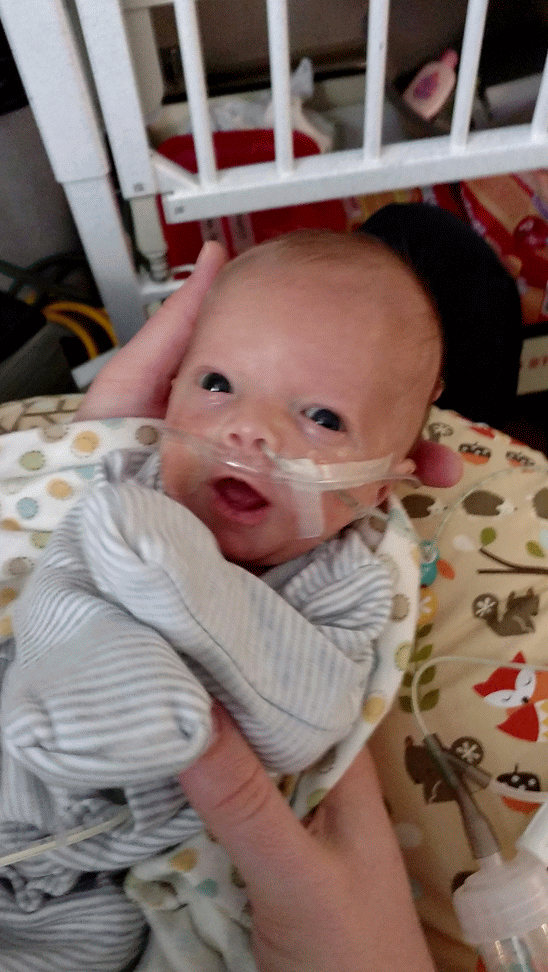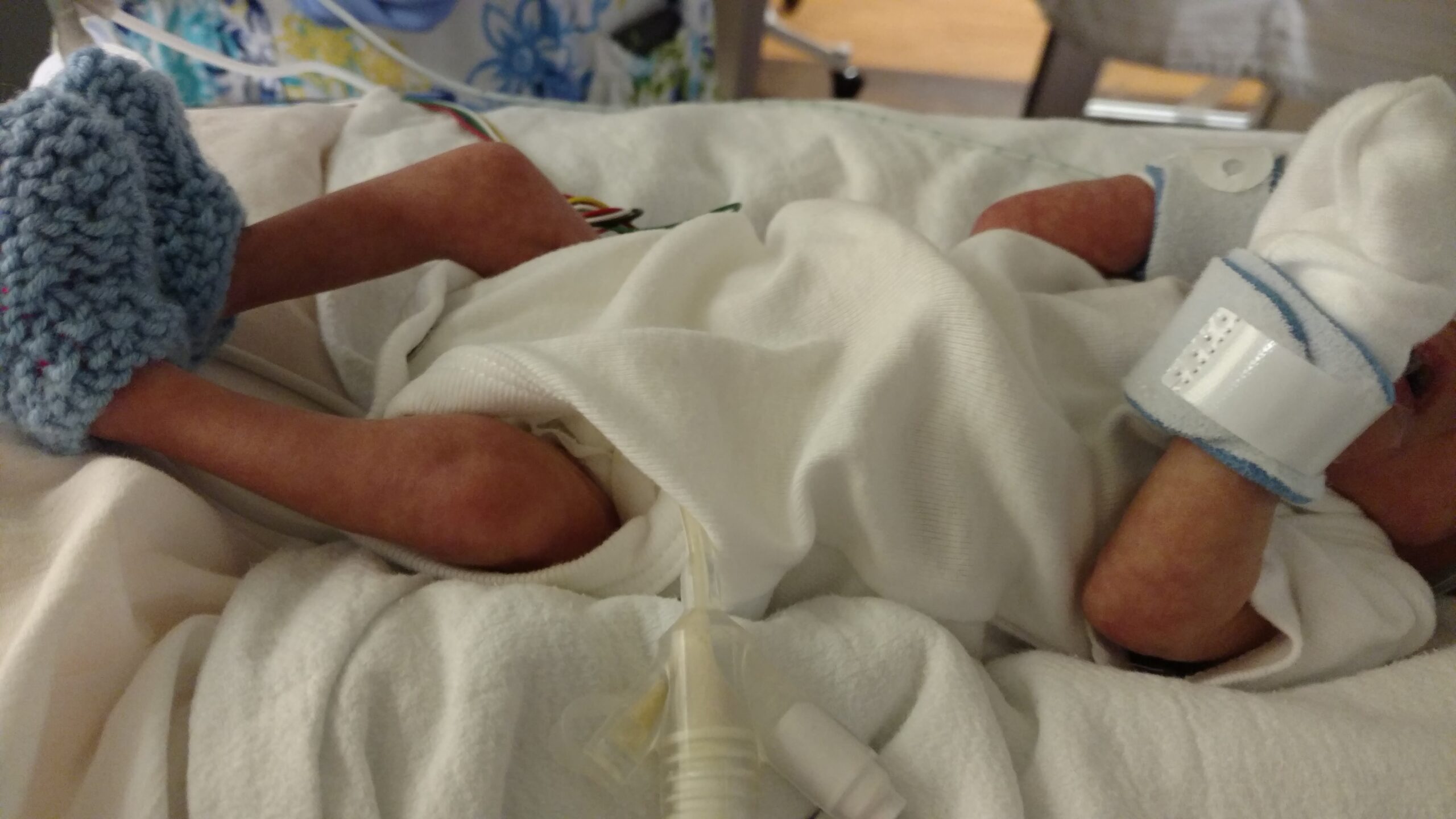Of Teddy’s plethora of diagnoses, there are two that caused the most fear and uncertainty for me at the time they were given: Caudal Regression Syndrome and Hydrocephalus. Shortly after Teddy turned a month old, he was wheeled out of his room for his first official MRI. It was clear just by looking at him that Teddy’s body was different. He had this big beautiful head, an asymmetrical torso, and tiny hips and legs. Even now, Teddy has the head of a 7yr old, the torso of a 5 yr old, and the hips, legs, and feet of a 3 yr old. When he was finally stable enough to get an MRI, we knew we would finally get a clear answer on what that all meant. Even though we knew they would find something, we were definitely not prepared for the diagnosis discussion that followed the MRI.
While most of his story at this point is being written from flashes of memories or extensive research through medical records and 100K photos, this is one of those memories that is burned into my brain. I remember the corner shape of the room we were in and exactly where his bed was placed. I remember exactly where I was standing next to his bed and exactly where Jason was at the other end of the bed after standing up from the chair and walking over when the doctors came in. I can remember his nurse standing behind the doctor and resident on the other corner of the bed, with a consoling but supportive smile on her face, as if to say “don’t worry, it will be okay.”
When the doctor started talking, she told us that Teddy was missing the lower portion of his spine. For the best they could tell, his spine stopped around L4, so he had no tailbone (sacrum or coccyx). Our heads started spinning. She said it was called Caudal Regression Syndrome (Sacral Agenesis) and was extremely rare (there are not any good studies to say how rare, but based on various studies it is between 1 in every 25,000 or 1 in every 100,000 births). She said there was no specifically known cause and there was a spectrum of issues associated with the diagnosis, that could limit independence. I asked if he didn’t have a tailbone, how could he sit? She said there was no way to know, but these children often are not able to sit, crawl, walk, or stand. After she said that, I think we both just stared stunned. While we had never dreamed those big dreams of what it would be like for our future son to play football, I don’t think either of us could have ever envisioned our life with a child who was unable to sit. We couldn’t quite process what she was telling us.
I wish we had a time machine, because the benefit of hindsight and education is so amazing, but at the time I think we truly felt completely overwhelmed and had no idea how we would possibly manage and could not initially imagine what kind of quality of life he would have. Our hearts were breaking for him, because all we could imagine was the struggles he would face. She did go on to say that while there were no surgical interventions to correct CRS/Sacral Agenesis, there were surgeries that could be done to help improve independence and quality of life. While the doctor did her best to comfort our fears, this was another example of our local hospital not having the experience in rare conditions, so only being able to provide the on paper explanation and not the real life experiences. Because kids with CRS are remarkable and can overcome pretty much any limitation they face. I will do a separate post to go into detail about the CRS diagnosis and how it specifically affects Teddy.
I remember that we got a visit from Teddy’s orthopedic surgeon shortly after the diagnosis. It is rare that an orthopedic surgeon visits the NICU, especially for a baby only 3lbs, because in a lot of cases (if not most), orthopedic surgeries will occur later in childhood after some growth has occurred. But for whatever reason, she decided to come down and meet Teddy. The nurses were a bit concerned, because our local surgeon is either one of those doctors you either love or hate, there is no in between. She is straight and to the point and doesn’t hold punches. I can remember her standing at the end of his bed. She was commenting about the fact that he was able to move his legs fairly well, but that he seemed to be missing some muscles. She also saw that his feet didn’t point or flex and his toes did not wiggle. These were all indications that his nerves were not working the way they should. Then she looked at us and said, “we will just have to see.” She said if he is meant to be a wheelchair user, then we will do our best to get him to use a walker. If he is meant to use a walker, then we will do our best to get him to use a cane. Anf if he is meant to use a cane, then we will do our best to get him to walk independently. And in that moment, we knew we liked her.
And you know what, she was right. As Teddy does, he defied the odds and started walking independently when he was 4 years old!





